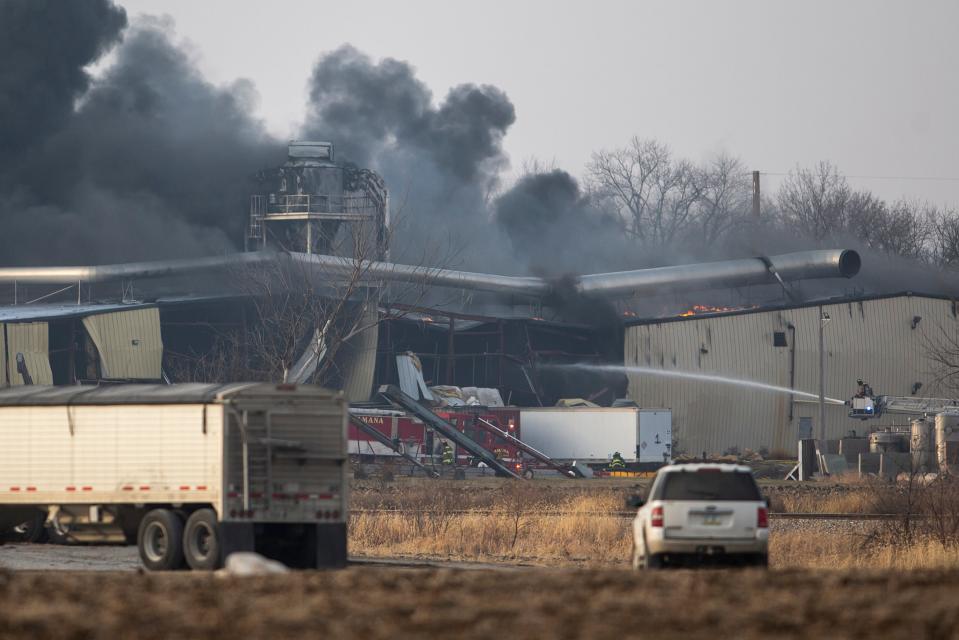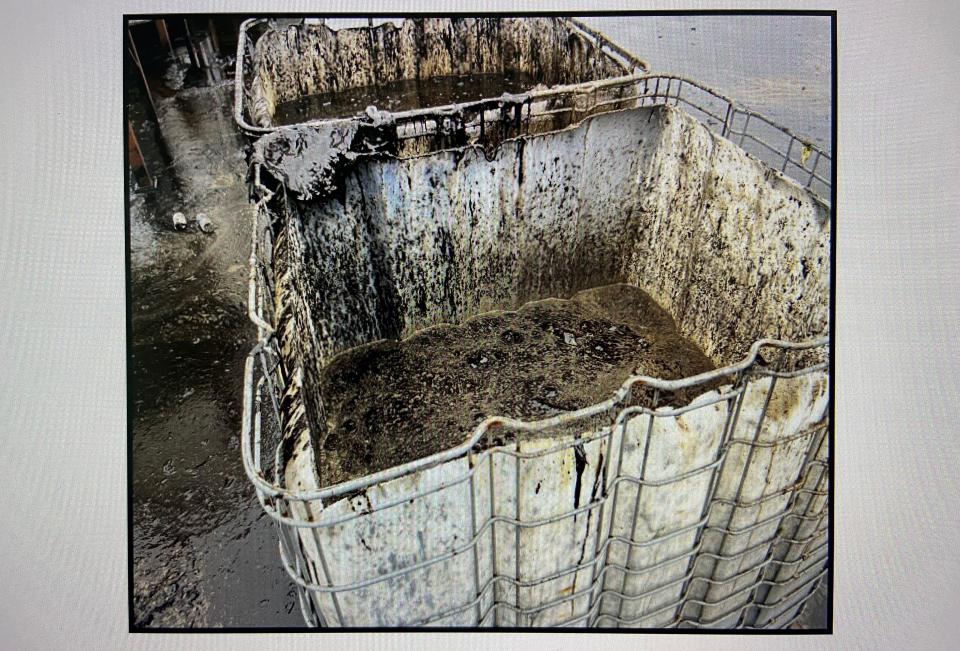Chemicals in C6-Zero Marengo blast were 'possibly carcinogenic,' company discloses
A spokesperson for a company whose Marengo plant exploded and burned Dec. 8 in a statement Tuesday acknowledged for the first time that the mix of chemicals the company, C6-Zero, was using there were "flammable, toxic and possibly carcinogenic."
The company, which recycles asphalt roofing shingles into oil, gave information about its chemicals to federal and state regulators amid investigations after the blast, which sent two employees to the University of Iowa Hospitals & Clinics burn unit for about a month.
However, C6-Zero and regulators had not provided information about the chemicals to the public, including people evacuated as the plant burned, with the company saying its blend is "protected as a trade secret."

In his statement Tuesday, C6-Zero spokesperson Mark Corallo said the combination of chemicals the company used to dissolve the shingles carry several safety hazards. In addition to potentially causing cancer, the chemicals can corrode the eyes and skin cause burns and disrupt the endocrine system. Prolonged or repeated exposure can damage the cardiovascular system, blood, spleen, digestive system, and stomach.
Also, according to the company statement, the chemicals can kill fish. And some of these chemicals also "can be considered oxidizers," meaning they can intensify fires.
EPA: Marengo plant that exploded sought to turn shingles into 1,800 barrels of oil daily
Company came to Iowa after facing regulations elsewhere
After facing environmental regulations in Texas and Colorado, C6-Zero began assembling its asphalt shingle recycling factory in Marengo in early 2021. Company employees would load piles of used shingles onto a conveyor belt, which ran the roofing material through a series of large, rotating, cylindrical devices called trommels.
The trommels contained the chemicals that dissolved the shingles into oil, fiberglass and a gravel-like mixture. Amid rounds of testing, the factory exploded Dec. 8. Marengo Police Chief Ben Gray said a conveyor belt carrying the material between two of the trommels stopped working and the machine sparked, igniting vapors from the chemicals.

Corallo said in his statement that the company had reported hazardous information about the chemicals on safety data sheets, standard forms that manufacturers are supposed to maintain. The sheets spell out potential health issues and how managers should react to exposures through spills or fires.
Corallo also said the safety data sheets were " made available for review to state and local officials at the C6-Zero facility throughout its operations."
But Iowa County Emergency Management Coordinator Josh Humphrey said he hadn't succeeded in getting the information, which he first requested information from the Iowa Department of Natural Resources after a smaller fire at C6-Zero in late October, sparked by an employee welding near one of the trommels. Humphrey said the DNR referred him to the State Fire Marshal's Office, which told him that the agency was "working on getting them to comply" with the request for the list of chemicals before the Dec. 8 explosion.
"(C6-Zero) didn’t have any permits," Humphrey said. "So nobody thought they were doing anything. And nobody believed they were allowed to be in production yet."
In a March 31 interview, he added that he still didn't know what chemicals were inside the factory ― or what health hazards the mixture had created. C6-Zero gave the EPA two safety data sheets after the explosion, but Humphrey said the federal regulators declined his request for the documents, claiming they were "confidential business information."
More: Iowa worker sues C6-Zero factory, claims chemical explosion burned one-third of his body
Emergency management director worries firefighters affected
Meanwhile, a judge ordered C6-Zero to turn over a list of chemicals to the Iowa Attorney General's Office by Feb. 17. But the judge also allowed the company to claim the documents were confidential.
Humphrey said he had not managed to get the information from the state, either. He added that even some DNR staffers were not allowed to see the documents.
He said he had been trying to get the information for local firefighters, who battled flames at the factory for about 18 hours.
"Something may have happened to them because of the fire," he said. "That could happen in any fire. This one is just kind of an outlier because we don’t know what chemicals are involved."
The EPA denied a Des Moines Register request for the safety data sheets in late January. A spokesperson for the DNR declined to comment on C6-Zero's statement.
Previously: After 2 months, cleanup from C6-Zero explosion, fire to start in Marengo
Tyler Jett is an investigative reporter for the Des Moines Register. Reach him at tjett@registermedia.com, 515-284-8215, or on Twitter at @LetsJett. He also accepts encrypted messages at tjett@proton.me.
This article originally appeared on Des Moines Register: C6-Zero chemicals in Marengo were hazardous, company discloses
